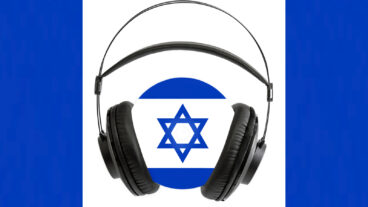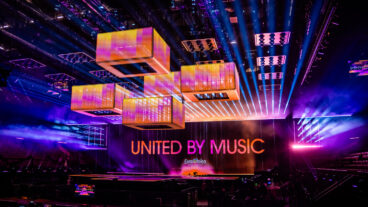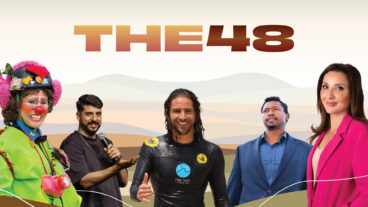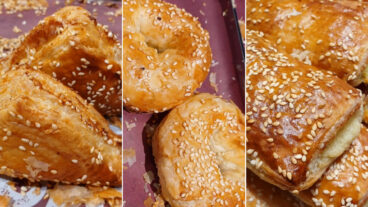Hebrew University Professor Ehud de Shalit, a professor at Hebrew University: This exhibition allows its visitor an accessible route to math, one that even children will find enjoyable.A group of Israeli academics believe that peaceful coexistence between Israelis and Palestinians could be as easy as adding 2 plus 2.
In fact, along with Palestinian professors, they’ve put that theory to practice by developing and launching a new museum exhibit called Meet Math, a project intended to inspire young minds to pursue the wonders of numbers.
The exhibit, which opened last month at the Bloomfield Science Museum after several years of preparation, represents a joint effort between the Jerusalem educational facility, the Italian Institute of Science (La Citta’ della Scienza) and East Jerusalem’s Al Quds University, and serves as a testament to cooperation between Israeli, Palestinian and Italian mathematicians, designers, builders, curators and educators.
“Math is a language used by all, and at the same time there are so many people, especially school students, who are terrified of it and feel it is beyond their grasp,” Ehud de Shalit, a professor at Hebrew University and academic consultant for the exhibit, told ISRAEL21c. “This exhibition allows its visitor an accessible route to Math, one that even children will find enjoyable.”
The project came about as part of an initiative to open an interactive science center at Al Quds – the site where the exhibit will become permanently stationed when it moves there later this year. The Bloomfield Science Center seemed like a natural choice for this joint enterprise, as they have long been involved in efforts promoting Arab-Israeli coexistence.
“We have been hosting Arab teachers and schoolchildren in our museum since our very first days as a museum,” says Maya Halevi, director of the Bloomfield Science Museum in Jerusalem. “This made us natural partners for the project of creating a new science center for Al Quds University. Our experience showed us that when children work together, hostility and language barriers are put aside.”
The concept proved true, according to Halevi, even in the formative stages of the exhibit. “The same thing happened with our crew and the Palestinian crew when the latter came to our workshops and we all worked together. Working on a mutual exhibition made us the best of friends.”
The project was aided by the Citta’ della Scienza in Naples, who helped with the overall design for the exhibit, and who provided a meeting place when security restrictions made it too difficult for the Palestinian and Israeli crew to meet in Israel.
The inspiration for the exhibition centered on the idea that through finding neutral common ground, a road towards coexistence could be paved.
“We hope this effort will prove to be a step in showing how the universal language of mathematics can be translated into a shared language of political and moral values,” says Professor Sari Nusseibeh, President of Al Quds University.
Dr. Hasan Dweik, director of Science education programs at Al Quds agrees. “We chose math because it is the language of logic. Math is the base for all science, and even though I’m not a mathematician I acknowledge the importance of this ‘language’ in the process of scientific studies.”
The exhibit itself is interactive and didactic, combining humorous elements with graphic panels that explore the history of mathematics. Using light and color, the exhibit intends to intrigue children, and encourage them to engage in numerous educational activities that are components of the exhibit.
The specific subject of math was chosen after consideration was given to a number of themes, says Professor Peter Hillman. “Mathematics was chosen because of its universality, the major Islamic contributions to its history, and the need for a program of enrichment in mathematics teaching. We also welcomed the challenge of doing something new and different, exploring something that was perceived as an inaccessible, abstract subject. Our mission was to make it interactive and attractive for the children who will visit the exhibit.”
De Shalit, who spent hours working on the mathematical content of the exhibit, says that he was drawn to the idea of trying to make a child understand the concept and beauty of mathematics. He ended up employing the help of his school-age son, who became enamored with the concept of the exhibit as well.
Finding a way to make math understandable to children fills an important need in the Palestinian community. “We have a real need for teachers that will be able to cope with the challenge of teaching math and science to our children,” says Dweik. “With the help of the Bloomfield Science Museum and our Israeli friends it was made possible for us to establish an institution where our teachers could be trained for this purpose.”
While the end goal was an exhibit that would find common ground for coexistence, the means to the end emphasized coexistence as well. Halevi notes, “It was important for us that the Palestinians would actually build the exhibit themselves, and would not rely on ready-made ones created by the Italian or Israeli staff. This was actually the first time that the Palestinians were not simply donated an exhibition, but were involved in every step of its making.”
Hillman echoes that sentiment, referring to the creation of the exhibition as “the courage to cooperate.” The emphasis on constant coexistence was not always easy, and was constantly fraught with hurdles that needed to be overcome.
“Difficulties arose from both sides as Israel frequently closed key border crossings, and there were voices on the Palestinian side that demanded our [Palestinian] partners stop cooperating with Israelis,” Hillman recalls. “Many times our Palestinian partners’ lives were threatened and there was real danger for them to continue working with us.”
But through all of the difficulties, the team remained committed to the project, and to the concept of peace. And like so many others before him, Dweik accepts the sacrifices of today in hopes for a safer tomorrow, “After all, we are making this effort for the sake of our children and for the promise of a better future.”












